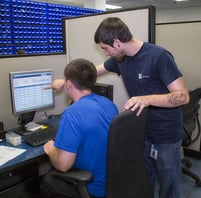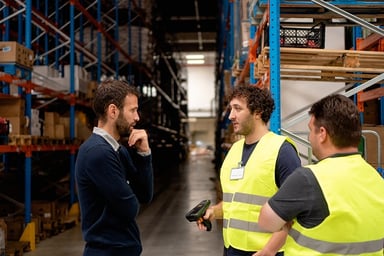 Yes, you read that right. Wandering around can make you a better manager. In today's fast-paced, corporate environment, it can be difficult to peel ourselves away from the daily grind of emails, problems, and reports that keep us chained to our desks and out of sight. We can become so bogged down with the responsibilities that come with being a manager, that it’s easy to forget our biggest responsibility: Managing.
Yes, you read that right. Wandering around can make you a better manager. In today's fast-paced, corporate environment, it can be difficult to peel ourselves away from the daily grind of emails, problems, and reports that keep us chained to our desks and out of sight. We can become so bogged down with the responsibilities that come with being a manager, that it’s easy to forget our biggest responsibility: Managing.
Managing doesn’t just stop at enforcing company policies and procedures or driving production. Managing is spending time with your employees. It’s embedding yourself with your teams, asking questions, and ultimately driving change through their feedback. No manager knows everything. They can’t.
There’s a degree of separation between the front line and the office (more degrees, and even more separation, are added the higher up the corporate ladder you climb). But there is one technique that can bring managers closer to their processes and employees, and ultimately make them more effective. MBWA, or Management by Wandering Around.
 MBWA is a technique created and popularized by William Hewlett and David Packard, founders of the computer hardware company, Hewlett Packard. They were fanatics about the technique. MBWA is as simple as its name suggests. Wandering around your respective areas every day. This isn’t a hands-in-pockets, whistling a tune stroll through your area. It’s a targeted approach to people and process management.
MBWA is a technique created and popularized by William Hewlett and David Packard, founders of the computer hardware company, Hewlett Packard. They were fanatics about the technique. MBWA is as simple as its name suggests. Wandering around your respective areas every day. This isn’t a hands-in-pockets, whistling a tune stroll through your area. It’s a targeted approach to people and process management.
Every trip out should be planned and in your calendar. It should be treated like your most important meeting of the day because there aren’t too many that will supersede it, in terms of adding value. Your purpose is clear: talk to your employees. Focus on their jobs, be positive and upbeat. This isn’t a formal review, it’s just a chat. Ask “Why” as often as is appropriate. Listen. Take mental notes or write things down, whichever helps you retain information better. Respond constructively. Engage. Most importantly, thank them for their time (they did you a favor, after all).

This sounds simple and, in practice, it is. But the impact and positive influence this technique can have on an organization are anything but. Relating to your employees builds a trusting rapport. It allows them a safe space to provide open and honest feedback without fear of repercussion. Engaging everyone in equal doses makes them feel important (because they are). Allowing them to see you from a space other than behind a desk reminds everyone that you are a person, and while you’re a champion of the company, you’re also a champion of your employees. It also drives accountability and productivity. If your employees know you might drop in on them, they’re more likely to work harder and focus on the task at hand. It gives them a sense of ownership in the bigger picture and might even spark creativity and outside the box thinking, which is always good for business.
This isn’t always easy to make time for, but it’s something every manager at every level can benefit from. Even if it’s an hour a day, and four employees each get a fifteen-minute visit. That’s four more employees, processes, and situations that you can improve. It’s four more chances to relate to your team in new ways. It’s four more opportunities to drive productivity and give your team a sense of ownership. And most of all, it’s four more people who see what the company values most: The Employee.
To learn more about Radwell International

